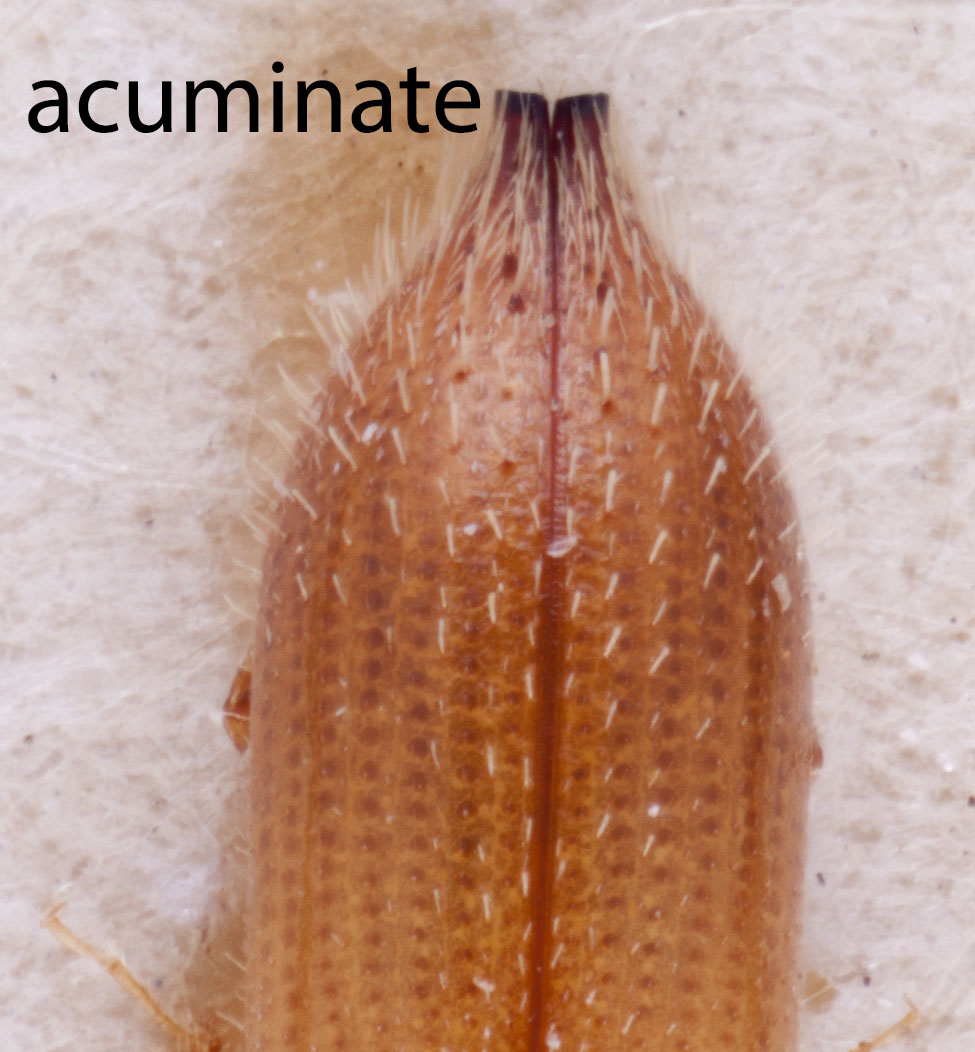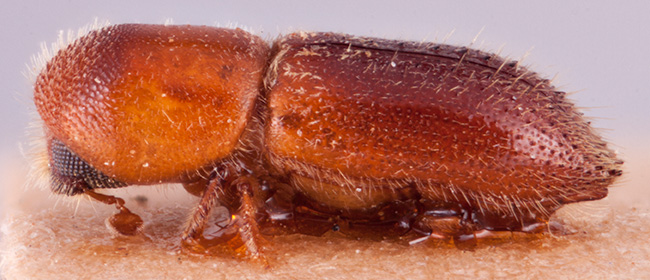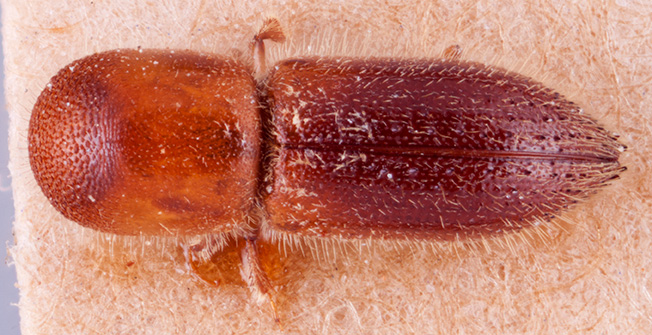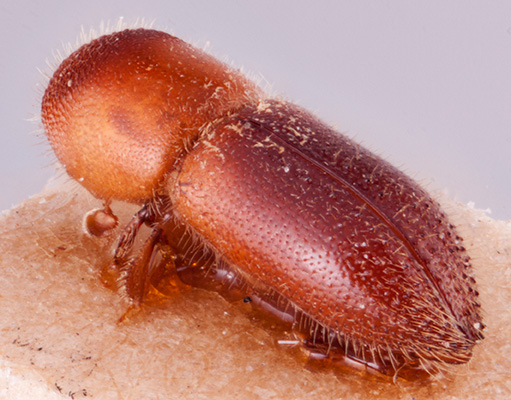Cryptoxyleborus turbineus
|
Cryptoxyleborus tubineus lateral; R.K. Osborn |
|
Cryptoxyleborus tubineus dorsal; R.K. Osborn |
|
Cryptoxyleborus tubineus declivity; R.K. Osborn |
|
Cryptoxyleborus tubineus frontal; R.K. Osborn |
Taxonomic history
Xyleborus turbineus Sampson, 1923: 288.
Cryptoxyleborus turbineus (Sampson): Schedl, 1937a: 551.
Diagnosis
3.2−3.3 mm long (mean = 3.26 mm; n = 4); 3.2−3.3 times as long as wide. This species is distinguished by the elytralelytral:
pertaining to the elytra
apexapex:
point or edge furthest from the body; opposite of base
 acuminateacuminate:
acuminateacuminate:
tapering to a long point ; two mycangial pits broad and narrow on basalbase:
; two mycangial pits broad and narrow on basalbase:
point or edge closest to the body; opposite of apex slope of elytra; declivitaldeclivital:
slope of elytra; declivitaldeclivital:
pertaining to the elytral declivity
interstriae denticulatedenticulate:
covered in denticles
; and antennalantennal:
pertaining to the antennae
funicle 4-segmented.
This species most closely resembles C. stenographus and can be distinguished by the larger size and elytralelytral:
pertaining to the elytra
vestiture irregularly biseriate on discaldiscal:
pertaining to the disc of either the pronotum or elytra
interstriae 2− 4.
May be confused with
Cryptoxyleborus eggersi, C. quadriporus, and C. stenographus
Distribution
India (Jharkhand, Odisha, West Bengal), Myanmar, Philippines, Thailand, Vietnam
Host plants
recorded from Pentacme and Shorea (Dipterocarpaceae) (Beeson 1930Beeson 1930:
Beeson CFC. 1930. The biology of the genus Xyleborus , with more new species. Indian Forest Records 14: 209-272.)
DNA data
specimens not available for sequencing





